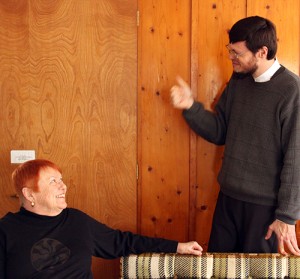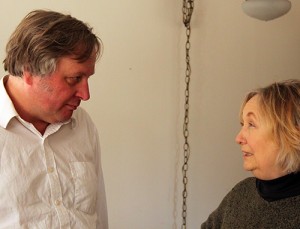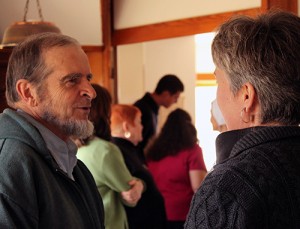As long as I have been a Christian, I have been skeptical of the pastoral system. Though I am not critical of pastors themselves, I do have a fair amount of discomfort with the idea that one person should be singled out as “the minister,” with the rest of the church relegated to support roles. You could say that I am especially committed to the concept of the priesthood of all believers, the responsibility that each one of us has for living as disciples of Jesus.

Though there are certainly dangers in the single-pastor model, I have also observed that when leadership is everyone’s job, it often becomes no one’s job. In my experience, a lack of explicitly recognized leadership can be a mask for hidden and informal structures that, when dysfunctional, cannot be questioned. It is extremely difficult to critique faulty leadership in a community that does not admit to having leaders! I have been part of communities where the refusal or inability to recognize and empower Spirit-led leadership has resulted in conflict, dysfunction and stagnation.
In spite of the risks that I see in the traditional pastoral model, I cannot deny the advantages of designating particular individuals as leaders within the community. At the same time, the single-pastor pattern of many churches just does not seem to work very well in our present situation, if it ever did. The work of the church is simply too great a burden for any one person to carry.
I am increasingly convinced that we need a way forward that is trapped neither in the informal power structures that can suffocate and stagnate our communities, nor in a pastoral system in which all responsibility and decision-making is vested in one person. What might an alternative model look like?
 What if we expanded the idea of what it means to be a pastor? In your typical Christian community, it is often expected that perhaps one person out of 100 will be a pastor. What would happen if we expected that number to be more like one in 10?
What if we expanded the idea of what it means to be a pastor? In your typical Christian community, it is often expected that perhaps one person out of 100 will be a pastor. What would happen if we expected that number to be more like one in 10?
This is the basic idea of the cell church model that Capitol Hill Friends is experimenting with. Each small group has a leader who functions as a pastor for the 6-12 people in that group, working alongside an apprentice leader and another person designated as the group’s host. The small group leader’s main jobs are to care for the members of the group, encourage each person to develop their spiritual gifts, and to provide mentoring and training to an apprentice leader, who is preparing to become a leader of her own small group.
Operating under this sort of cell church model, a church of 100 people should have 10 pastors, 10 pastors in training, and 10 people who take responsibility for coordinating logistics. Of course, you may ask, what about the other 70 people? Are they just spectators?

No way! Consider the power of having 30% of our community consistently focusing their attention on identifying, encouraging and releasing the spiritual gifts of each individual under their care. With this encouragement, we can expect to see the development of a variety of gifts – evangelism, prayer, practical helps, administration, teaching, music and prophetic (justice-oriented) ministry, among others. In this model, the role of the leaders, apprentice leaders and hosts is primarily to equip the whole community to operate in their gifts, each one carrying out a particular function as God directs.
In effect, the small group leaders take on the role of community organizers. Their job is to help the whole congregation to discover how to work all by itself under the direction of the Holy Spirit. Rather than expecting a single pastor to take all the initiative, the leaders of each small group encourage every individual to find her place in the body. In this way, small group leaders help to create an environment where truly congregation-led leadership can happen.
What has been your own experience? Has your community operated more in a single-leader model, an informal leadership style, or perhaps in some other model? Have you noticed what gives some communities healthier leadership dynamics than others? What patterns do you see? How would you like to see our communities handle leadership going forward?